If you asked Brian and Sharon Jones “What’s the best rig for full-time living?” they will probably quip “The one you make yourself, of course!” This Texas couple knows. Their adventure-bound big DIY RV has all the best quality features of a well-made tiny house or high end RV. But it has a price tag that’s thousands of dollars less.
“I think our home is unique in the tiny home world and the RV world,” says Brian, 45. He and his wife Sharon, 49, have seen enough RVs through the years to back up their confidence. They hit the road in 2012 when Sharon put her nursing job aside to follow a passion for photography and Brian stopped driving truck to write his first full-length novel, Indian Paintbrush. After workamping around the west and falling in love with the nomad life, they embarked on their homemade RV project after a disappointing search for second full-timing rig.
“Our 2007 Jayco travel trailer was in good shape but with no end to this lifestyle in site for us, we decided we needed something more durable that would withstand thousands of miles possibly for the next 20 to 30 years and beyond. If decide not to travel, we wanted to have a real home we could park,” says Brian.
Unfortunately, even the best quality RVs with reputations as a full-time RV rig couldn’t match their expectations of what a home on wheels should be like. Disappointed with what $100,000 would get them, they decided to invest time, money and construction skills into building their dream home.
Now, their one-of-a-kind big DIY RV design is chronicled at their blog. The tiny house movement inspired their project. It features a maintenance-free metal exterior and quality wood finishes planned for the interior. A robust solar electric power system will enable them to continue the boondocking lifestyle they love. Most of the labor has been done with their own two hands, other than when a friend helped set up the steel subframe, and helped with some of the plywood sheathing and sheet metal.
When complete, they’ll probably invest close to $70,000 in project materials. In return, they’ll have a road-ready, full-time RV home on wheels with exceptional quality. “I realize that doesn’t include labor, but I also believe we’ll have a far superior home,” explains Brian.
The RV’s frame and foundation is built with heavier gauge steel and better quality than a production RV frame. They expect theirs to stand the test of towing across thousands of miles over the toughest terrain. They purposely left out slide-outs, hydraulics, electric motors and other conventional RV systems, which Brian says ultimately become maintenance and repair issues neither want to deal with. Their big DIY RV is heavier than a typical production fifth wheel, but they’re happy with the trade-off.
The Big DIY RV Specs:
- Towed by a 2017 Dodge RAM 3500 4×4 dually regular cab featuring the Cummins diesel with 900 ft lbs torque, Aisin 6 speed automatic and 4:10 rear axle ratio, giving it the highest trailer load rating of approximately 31,200 lbs.
- Built on a purchased trailer with (3) 7,000 lb axles (total axle weight rating is 21,000 lbs) with a 30,000 lb hitch coupler.
- The RV is 43’ along the roof backbone and 13’6” tall at the peak
- Completed weight will be 18000 lbs to 19000 lbs empty and dry
- 200 gallons of fresh water capacity with 100 gallons of black and 100 gallons of gray
- Total length will be 60’ feet.
The project started in May 2018 and has taken longer than expected as they build it on a relative’s property. “It’s pretty slow with just the two of us working on it,” says the former commercial truck driver. He wants to finish by October 2019.
“We’re dying to get our wheels rolling again! We haven’t sat in one spot fr so long in over 6 years!”
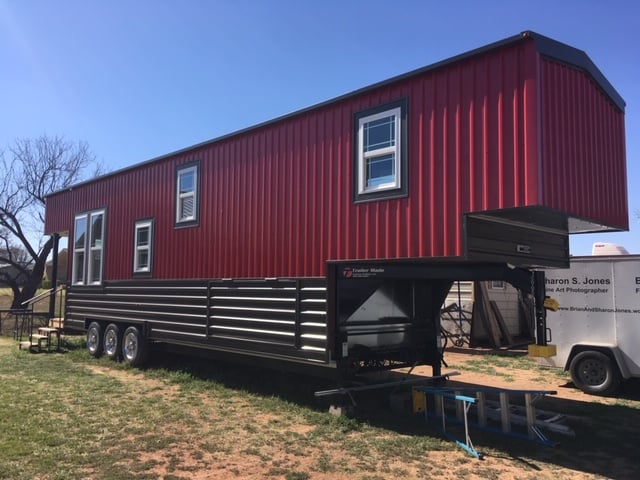
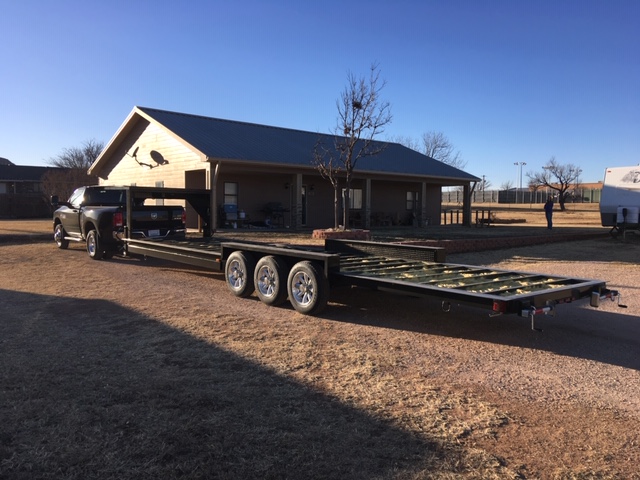
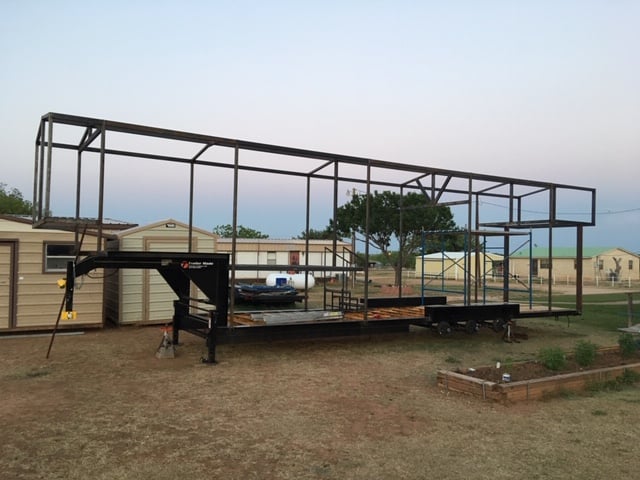
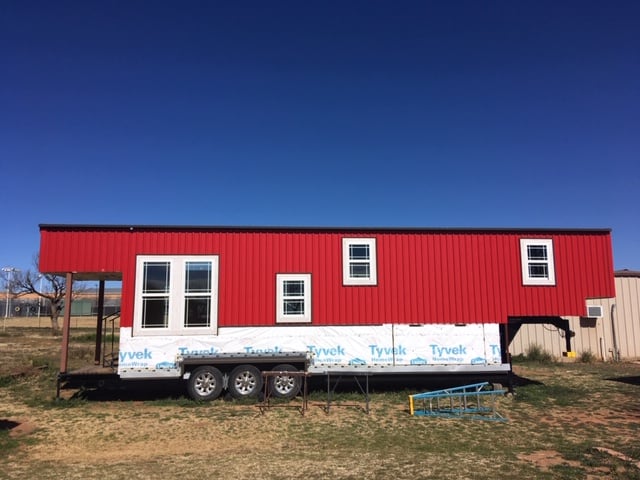
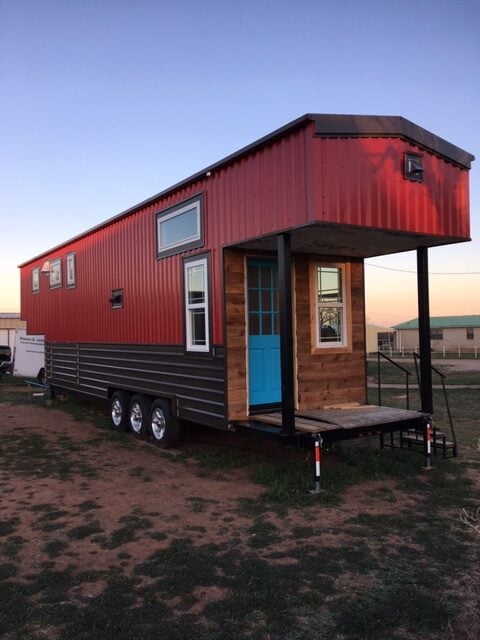
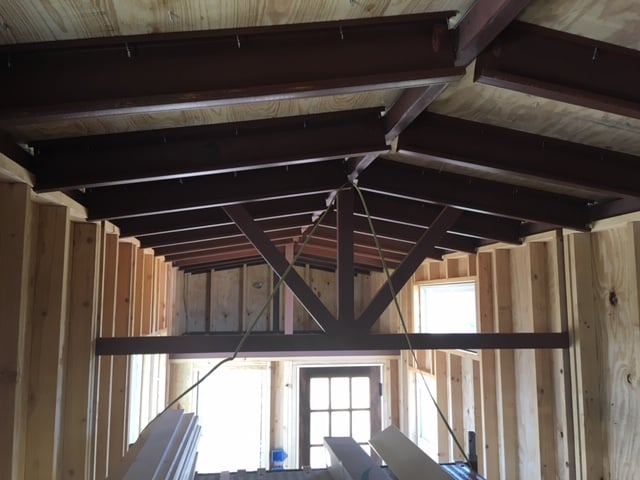


can’t wait too see the insides please post thank you deb in VT
Deb,
What part of the Green Mountain State are you from? My family has been in the Lake Bomoseen area since the late 1700’s.
Looking forward to seeing inside, love exterior!
At 60′, will you need special permit to travel off the Interstates?
60’ includes the truck.
It’s no longer than other production fifth wheels connected to a tow vehicle. So, nothing special required as far as length.
Unless I’m missing something, I’d be nervous about the total weight. Let’s say the dry weight comes in at 18000#. Add 1660# of fresh water. That totals 19660#, leaving only 1340# for cargo with a 21000# axle rating. That’s not much considering you will be full timing.
The axle rating is just that. About 25% of the trailer weight will be on the pin and carried by the truck.
That shows I’m getting old; I plum forgot about that.
21,000# GVWR with a projected actual weight of ~ 19,000#? I realize that the hitch will carry some weight BUT, add 200 gallons of water (~1,800#) plus, the “usual stuff” that RVers bring along and, I see a serious overweight problem in the making (and that’s before ANY consideration of a safety factor). Then factor in the LGT (Little Girly Truck) they plan as a tow vehicle and, it won’t be hard for the “tail to wag the dog” where the trailer overpowers the tow vehicle; especially when going downhill under less than ideal circumstances. The 13’6″ overall height will NOT allow them to travel on many roads. These folks need to step back and assess the project in its’ entirety. If they have not yet attended an RV Boot Camp, I STRONGLY recommend that they find and attend one (once it’s safe to travel again). In RVBC, ALL the relevant numbers will be explained and demystified. It would be a shame for all their hard work and resources be wiped out because they underestimated the job.
As they expected to be completed by October 2019 and I’m reading this article in April 2020, is it finished and is there an article on the finished trailer/little house?
Most of those rolling tiny homes become rolling mold factories. Those materials/construction techniques typically are suitable for stationary structures. But, after a few thousands miles over rough roads and fluctuating extremes of temperature, every joint and seam will loosen. Then, subject them to repeated 55-70mph in a driving torrential rain and moisture finds its path into the structure….and viola, mobile mold factory. Everyone thinks their first time/only effort at building a tiny house they can beat the skills of professional engineers with access to state of the art materials, technologies, test facilities, vendor support resources, and continual improvement processes. Good luck, I’m sure you as nurse/photographer/truck driver will be “The Ones” to beat the odds which the professionals continually struggle with against Mother Nature. That’s why anyone can just wheel 80,000lb 18-wheeler through traffic or treat severely ill persons the first time out. Ever seen anyone that built a home that didn’t say…”if I could do it over, I should have done (fill in the blank). And, it will still look like your first time…..not to mention virtually zero resale value. You obviously aren’t old enough to appreciate that dollars are a renewable resource; heartbeats not. As a retired 50 year successful engineer, business developer, corporate fixer, entrepreneur, I’m reminded of the old adage….Just because it can be done, doesn’t mean it should be. But, then, Bob Tiffin constantly observes that he couldn’t have built his last unit without having built the first unit. 🙂 🙂 🙂
Lovely looking job, though going to be a heavy house to travel with. One quarter of the weight on the pin, that to me is 2272kg in the back of a truck designed to carry a ton. The flex and water ingress is a constant battle I guess as with all RV’s. Best of luck with your plans and hope the gas prices stay low for you both. We believe that the tiny house idea is to be used on your on land and only moved if required, fire/relocate across country. To ‘get round’ planning I believe (I’m not Canadian) that having wheels classifies it as a non permanent structure.
The bigger questions are what and where is Brian resting his left hand on and why is Sharon smiling so much?
OK. A year later than the last comment. What happened?
Did they finish it?
Could they get insurance for a home-built?
How about an update.
The home has been completed for a few years now and has travelled about 5000 miles so far. We’ve had no structural problems, no mold, no water infiltration, no electrical or plumbing issues. I did have to redo the way the pocket doors are secured while on the road.
The truck handles the load well and the trailer is within the design limits on this truck per Ram. It handles, accelerates and stops well.
While I’m sure everyone hoped that it would work out for us, I’m a little surprised at the negativity from some commenters. Assumptions about us and this project were made based on very little information. Also, without knowing the exact construction methods we used, I’m not sure how anyone can claim this a probable failure based on a few numbers and a handful of photos.